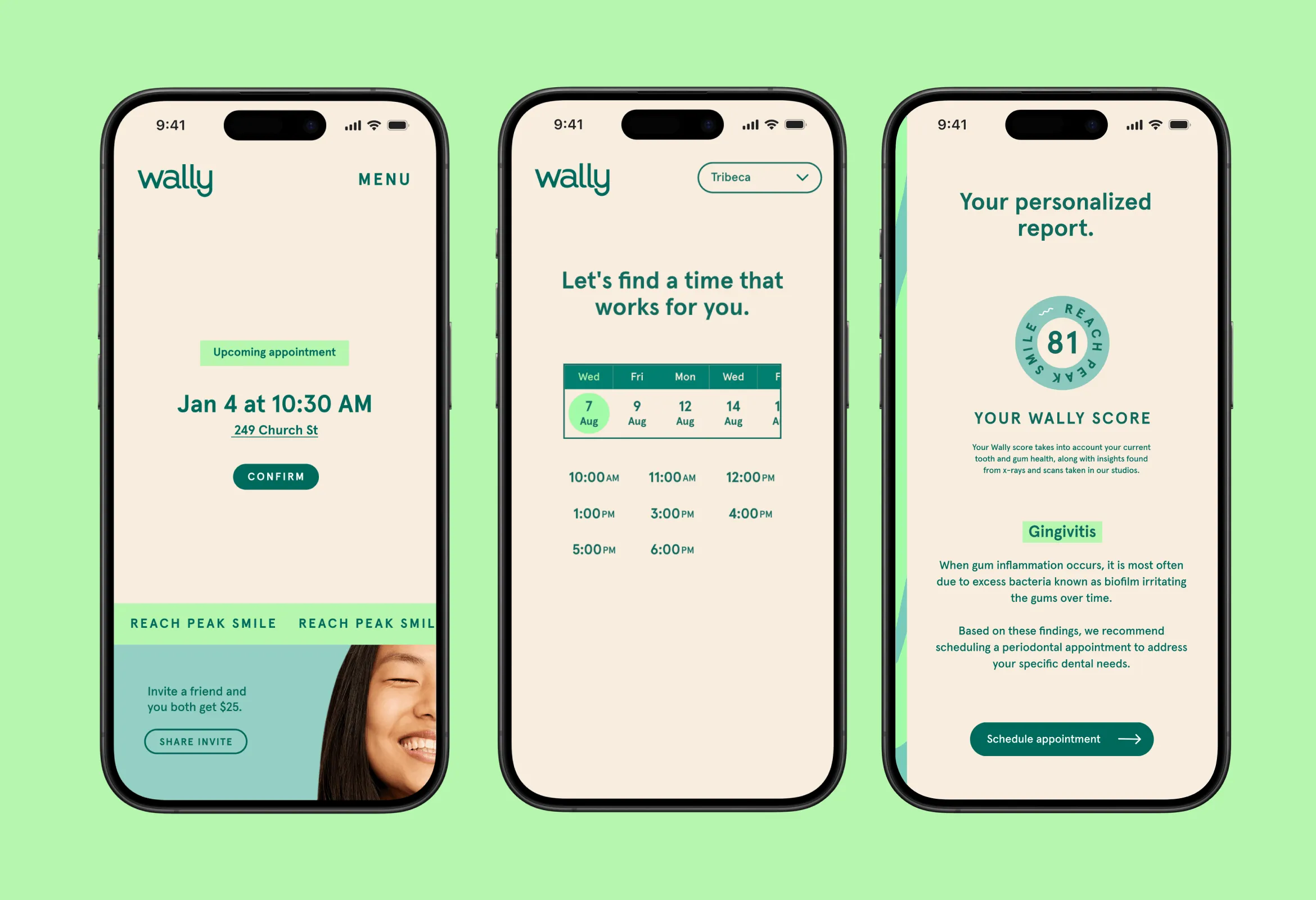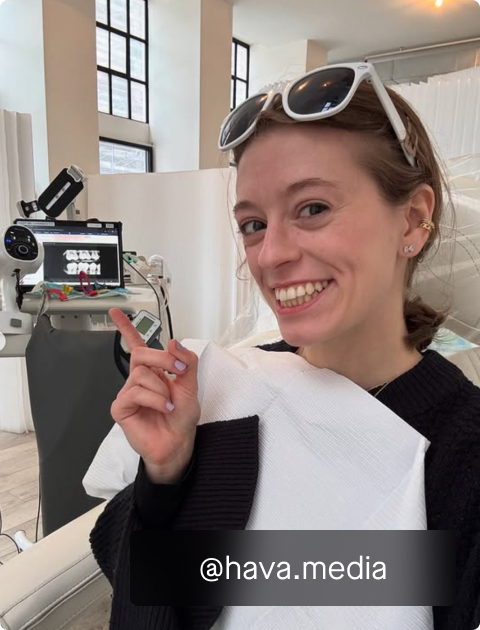How to prevent dry socket

The best type of dry socket is one that doesn't happen. If you're getting ready to pull some wisdom teeth, or you just got home from a tooth extraction, this piece is written for you. Let's get into what you can do before and after a tooth extraction to prevent dry socket.
A tooth extraction is a big deal for you, but for your dentist it's just another day in the office. Every year 10 million wisdom teeth are extracted in the US. So it's no wonder that most dentists are very casual about the extraction and healing process while us, normal people, are FREAKING OUT about not getting dry socket. As the non-dentists on our team will tell you, it's okay to be nervous about not getting dry socket. So let's turn that nervous energy into momentum to prevent dry socket.
What causes dry socket?
After your tooth is extracted a blood clot forms over the extraction which allows your body to health as bone regrows and soft tissue re-develops over the empty space. However, if that blood clot fails to develop or dislodges before the wound heals, you'll get a "dry socket." When this happens, the underlying bone and nerve are exposed.
The pain will affect the extraction site and can even radiate pain out along the jaw and to the side of your face. The open space (the socket) will get irritated and may fill with food particles, which just worses the pain and can lead to infection.
How to avoid dry socket
While dry socket is the most common complication people get after a tooth extraction, there are steps you can take to avoid being in the 2-5% of unlucky people who get dry socket.
"A big step you can take to ensure your extraction heals normally is to see a dentist or oral surgeon who has plenty of experience with extractions," shares Wally hygienist, Iman Zayed, RDH. "An experienced professional will be skilled and confident in extracting your tooth smoothly which helps minimize the risk for dry socket."
There are a few other things you can do to minimize the chances of dry socket even before your tooth is extracted:
- Don't smoke in the days leading up to your extraction. The chemicals in cigarettes and tobacco can interrupt the healing process. And smoking dries out your mouth... which means we recommend you don't smoke marijuana either prior to your extraction.
- Discuss medications with your dentist. Some medications may affect your ability to form a blood clot. Talk through what medications you're taking with your dentist ahead of the extraction to determine if any of them might affect you.
- Hydrate, hydrate, hydrate. Did we mention, hydrate? Being hydrated helps your body do its thing (make blood clots, heal) more effectively.
After the surgery your dentist will give you post-op instructions about the healing process and how to care for the wound:
- Keep your mouth clean. Gently rinse your mouth and gently brush your teeth, but avoid brushing the extraction site for the first 24 hours. For the next week (after the first 24 hours), gently rinse with warm salt water several times / day. Mix ½ teaspoon of table salt with 8 ounces of water, and warm up the water but make sure it isn't hot.
- Decrease physical activity. Plan to take the whole day off after your surgery. Your dentist will advise when you can start your normal activities again, and when rigorous activity is safe again.
- Pain management. Use cold packs on the outside of your face for the first 24 hours after the extraction. After that, use warm packs. These help lower pain and swelling. If your dentist prescribed you pain medications, follow the dosage.
- Stay hydrated. You've heard it before and we'll say it again. Drink lots of water! Your dentist will let you know how long to lay off the liquids that can dehydrate you, like alcoholic or caffeinated beverages. Ask your dentist how long you should wait to drink carbonated or hot beverages.
- Don't suck. We can't help you if you can't solve today's crossword puzzle. But you should absolutely avoid drinking things out of a straw, smoking cigarettes, or any other activities that require a sucking motion. The vacuum you create in your mouth to suck can dislodge the blood clot. Avoid sucking on anything for the first 48 - 72 hours after the surgery. Then go gently afterward.
- Stop tobacco use. If you smoke cigarettes or use tobacco, you'll need to kick the habit for the first 48 hours after the extraction. Period.
- Eat soft foods. For the first 24 hours eat as though you have no teeth. Stick to yogurt, applesauce, and other foods that don't require teeth to eat. For the first three days, avoid foods with small pieces (like rice) since those pieces can get stuck in the socket and cause an infection. When you're ready to upgrade to semi-soft foods, chew on the opposite side of your extraction. If you had all your wisdom teeth out, avoid chewing for a bit longer.
How do you prevent dry socket … but what do you do if you get it?
You're home from the tooth extraction when you might start to wonder, "Wait, how do I know if my socket is healing normally or if I have dry socket?" Head over to our piece Dry Socket vs Normal for everything you need to figure out if your extraction is healing nicely, or if you might have an issue.
And hey, 💩 happens and despite doing everything perfect, you could still get dry socket. If you think you have dry socket, give your dentist a call. Your dentist will want to take a look at the extraction site and help you get back on the road to recovery, so you likely need to schedule a quick appointment to see your dentist today or tomorrow.
If your dentist determines you have dry socket, they'll work on treating it to reduce the symptoms, lower your pain level, and help you recover. They might recommend one or a few of the following options:
- Flushing out the socket. Your dentist will flush the area to remove any debris, like food particles, that could be causing pain or threaten an infection.
- Medicated dressings. Your dentist might pack the socket with medicated gel or paste, and cover with medicated dressings. Your dentist can determine if this is the right treatment, and how often you'll need to change dressings.
- Pain medication. Your dentist may prescribe a pain medication if your situation and circumstances call for it.
- Self-rinsing at home. Your dentist may have you flush the socket at home to help with the healing process. You'll receive instructions and a plastic syringe with a curved tip to squirt water, salt water or a prescription rinse into the socket. Your dentist will inform you how long to continue the rinse, likely until the soft tissue has healed over.
Once you start treatment, you'll feel pain relief relatively quickly. The pain and any other symptoms will continue to improve and will likely be gone in a few days.
Conclusion: What you can do to keep your mouth healthy
Short-term and long-term attention to your socket is critical to health quickly and stay healthy. This will save you headache, heartache, and avoidable, expensive treatments.
Read up on what you can do to help your socket heal in the short-term and in the long-run. Your mouth and your wallet will thank you.
Check out "Dry Socket: The ultimate guide" for everything you need to know to avoid or deal with dry socket.









